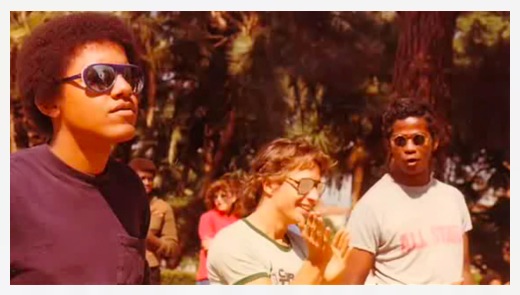Aftermath of the 1906 San Francisco earthquake and fire (via)
Odds & Ends
Churchill: On risk
Play the game for more than you can afford to lose … only then will you learn the game.
Winston Churchill (via)
Quote of the Day
There is no dishonor in losing the race. There is only dishonor in not racing because you are afraid to lose.
The Art of Racing in the Rain, by Garth Stein (via)
Photo of the Day
The scope-severity paradox
The more victims, the less likely we are to respond.
[A recent study] is the first to show that the bias toward feeling empathy for a single individual versus many — known as the identifiable victim bias — causes people to make judgments based on emotion that are disproportionate to the severity of a crime.
“The inspiration for the study was the observation that we tend to focus an extraordinary amount of attention and resources to crimes that have a really small number of victims, and have a harder time remaining engaged to larger scale kinds of crime,” said psychologist Loran Nordgren of Northwestern University, lead author of the paper Aug. 25 in Social Psychological and Personality Science (.pdf).
The bias, which the researchers named the scope-severity paradox, has implications for a wide variety of fields, including the politics and media coverage of large-scale issues such as climate change or mass genocide.
“It fits well with a line of research that shows that as the number of people who are victims of some problem [rises] — whether it’s a crime or a famine — the responsiveness to it, and the likelihood of taking action to reduce the problem, decreases,” said psychologist Paul Slovic of the University of Oregon, who was not involved in the study.
It has to do with the way empathy works, Slovic said. People empathize with people by putting themselves in the other person’s shoes. The more shoes there are, the harder it is to empathize with any single individual. People don’t multiply their feelings of empathy by the number of people involved.
Oliver Sacks on Mythmaking
Is the human instinct to tell stories — and it does seem to be instinctive since it crosses all boundaries of time and place — a way we explain the world to ourselves?
I would say that the human brain or the human mind is disposed to create stories or narratives. Children love stories, make up stories. Jerome Bruner, a great psychologist, has spoken of two modes of thinking. One is to create narratives, one is to create paradigms or explanations or models. And of course some of these will come together because then you want to have a story which explains. We all come into the world, and human beings sort of evolved into a mysterious world and had to wonder where they came from, how the world came from [sic], what are the stars doing. And in the absence of better explanations, I think, supernatural explanations sort of come to mind.
Via Big Think.
Hanging Up
This generation doesn’t make phone calls, because everyone is in constant, lightweight contact in so many other ways: texting, chatting, and social-network messaging. And we don’t just have more options than we used to. We have better ones: These new forms of communication have exposed the fact that the voice call is badly designed. It deserves to die.…
The telephone, in other words, doesn’t provide any information about status, so we are constantly interrupting one another. The other tools at our disposal are more polite. Instant messaging lets us detect whether our friends are busy without our bugging them, and texting lets us ping one another asynchronously. (Plus, we can spend more time thinking about what we want to say.) For all the hue and cry about becoming an “always on” society, we’re actually moving away from the demand that everyone be available immediately.
Bloggiversary
Yesterday was the first anniversary of this blog, which went up on May 22, 2009. As I’ve written here before, I doubt that the blog will generate significant book sales, which was why I started doing it, but I’ve come to enjoy blogging for its own sake and I’ve made a few new friends in the bargain. I may never get to that mythical thousand true fans, but if you’re a writer, you write — even if it’s not clear how many people are reading.
Anyway, here are a few random statistics about this blog’s first year. They are culled from SiteMeter, which is linked at the bottom of every page (click the green badge in the footer), and WordPress itself, the software the site runs on, which compiles a slightly different array of stats.
- Total visits: 8,547. Total page views: 14,946. Those are infinitesimal numbers next to some of the bigger blogs out there, but they are much higher than I expected a year ago. (The SiteMeter badge in the footer of this page understates the visits count because I did not join SiteMeter until a couple of months after the blog launched.)
- Most views in one day: 180. A spike like that usually means a post got picked up by some high-visibility blog or Twitterer.
- Average views per day: 41.
- Total posts: 150 (not including this one).
- Most Popular post: 848 hits, for a post on the writing habits of Graham Greene. The popularity of this post points up the difficulty of winning fans to my books by blogging. Most people come to this blog after Googling something completely unrelated to me but that I happen to have written about, like Graham Greene. Most of these visitors don’t stick around to learn about my books. Some of them do, I suppose, but it is a vanishingly small number. So is it worth it? Damned if I know.
- Least popular posts: 1 hit. Eight posts are tied for this honor. And I can’t even be sure that the one lonely hit isn’t me checking to see that the post looks all right. I don’t do much to publicize this blog. I link to significant new posts on Twitter and Facebook, but most of the smaller stuff I just put on the blog and never alert anyone. So most of the short posts slip under the radar, which is fine. Anyway, I will award the honor for Least Popular Post to this one, in which I announced I was taking a vacation and inexplicably required three long paragraphs to do it. It cops the prize because of this pathetic irony: a post announcing there will be nothing to read — and nobody bothered to read it. Oy. Blogging can be a kick in the groin.
- Total comments: 259. The best part of blogging by far is hearing from readers.
- Total cost: $0. Well, this isn’t quite true. I do pay to have the site hosted at Media Temple. But the site itself has cost me nothing. All the software and services I use are free. All the design, the Photoshopping, the coding, and of course all the writing is done by me. Of course, all that labor is only “free” if you assume my time has no value…
Last thing: the map below, also clipped from SiteMeter where you can see an updated interactive version anytime, shows the location of the last hundred visitors. In the last two days or so, this blog has had visitors from Queensland, Australia; Kuala Lumpur, Hong Kong and New Delhi; Israel, Ukraine, Spain, France, Holland, Belgium, plus several in England; and all over the U.S. Very cool.


